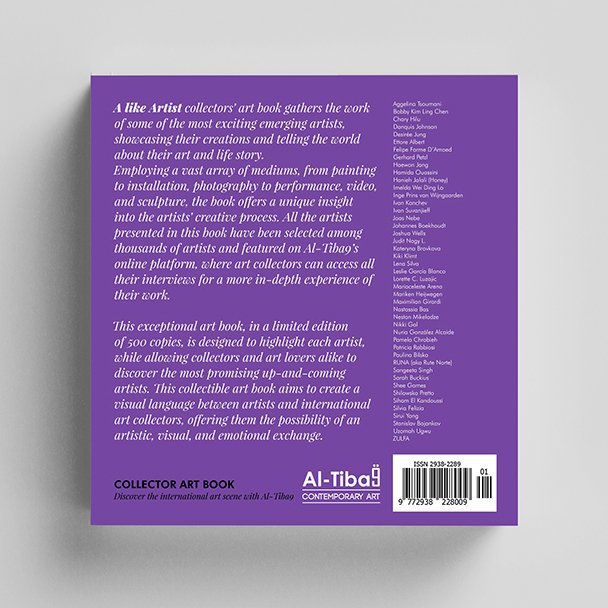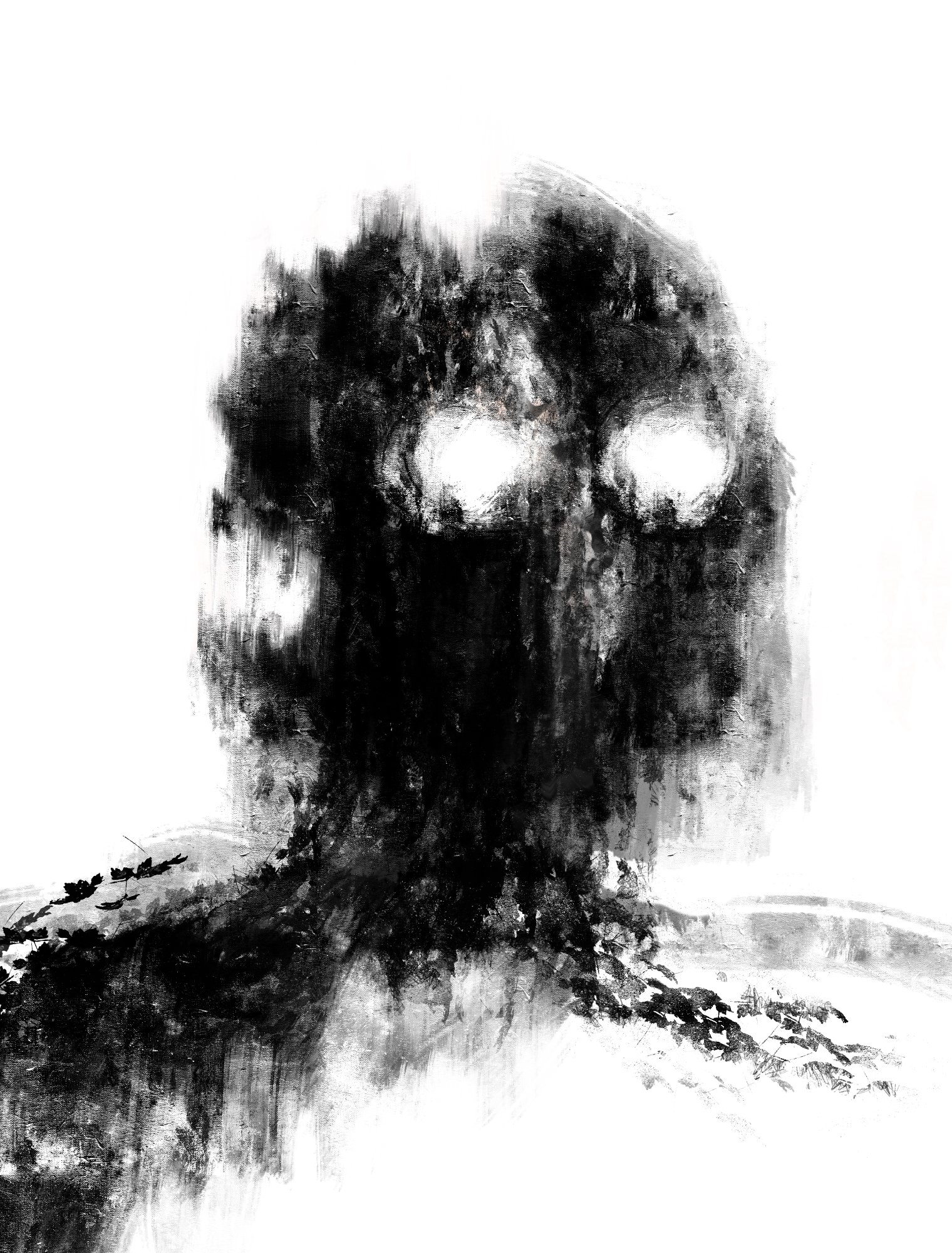10 Questions with Joshua Wells
Josh Wells was born in Chatham, Kent, in 1998. Josh attended Mid-Kent College (2015-2017) to start his Art & Design Extended Diploma and then trained as an Artist at Sheffield Institute of Arts (2017-2020), receiving a BA (Hons) in Fine Art. Josh Wells’ work has been exhibited in America, across the UK, and South Korea.
Joshua Wells - Portrait
ARTIST STATEMENT
Josh Wells is an expressionist artist that bases his practice around the absence of control. Dictated by his subconscious, Josh uses his practice to visually communicate his psychotic symptoms concerned with psychic automatism. Josh’s practice emulates a confrontation with his psyche, composing depictions of his psychosis. Through communicating a subverted reality, his work’s intent is to explain the inexplicable and describe the indescribable. Josh’s work articulates how the physical manifestation of intense psychological states can be signalled through visible communication.
His research-based practice has the born motive of filling the blurred line between reality and delusion, conforming with the ground-breaking research into communication patterns and their correlation to psychology.
Guys That Don’t Vibe, digital, 2020 © Joshua Wells
Limited edition art collectors’ book
INTERVIEW
First of all, introduce yourself to our readers. What is your artistic background, and how did you start experimenting with images?
My artistic practice started while studying for my Art & Design Diploma in Kent, England. This was an odd period for me, as it was at this time I started experiencing a dissociation from my surroundings due to an intense case of depersonalisation. I struggled to cope with this absence of thought, feeling, and emotion. During this period, I distinctly remember attempting to translate these feelings I had issues with experiencing onto canvas and large, metre-long rolls of paper.
During this time, my college tutors gave me a significant amount of insight into the art world and what genres they felt I should explore. My Tutors guided me towards artists such as Francis Bacon and Lucian Freud, as they thought there was a relation between my work and theirs. This really helped me gain an understanding of how people around me perceived my work.
Although I got an incredible amount of tutoring in artistic techniques whilst studying for my Diploma, much of my progression with experimentation was through my BA. In this period, I had my first experiences with psychosis and the intense psychotic symptoms that can come from it. Although I don’t recall many memories from this time, I believe this is one of the focal points in my experimentation and expression with images.
Why are you an artist, and when did you first become one?
I am an Artist for the sole purpose of contributing psychoanalytical approaches to psychological states and correlating this methodology to contemporary art. I would like to think that I have always been an Artist, or have always had Artistic traits; however, I would say the only thing that has changed is the manifesto behind my practice.
Folie à Déux, oil on Canvas, 30x24 in, 2021 © Joshua Wells
How would you define yourself as an artist?
I would define myself as an Expressionist that attempts to express the inexpressible, explain the inexplicable and describe the indescribable.
Can you tell us about the process of creating your work?
The process behind my practice is expressing my psychosis visually through the use of psychic-automatism, allowing my paintings to hold a disordered reality of their own. Whilst maintaining a case-study approach to my practice, I am able to reflect on the psychotic symptoms that I have visually communicated subconsciously. It’s hard to explain any further - mainly because of how complicated it is to associate yourself with a practice that requires you to dissociate from everything around you whilst you paint.
What themes do you pursue?
I feel my work has a compulsion to overshare oppressive and intrusive thoughts. With this being said, my work also has the ability to be extremely vulnerable in the way that my paintings use unconventional methods to communicate the blurred line between reality and delusion. This ongoing theme in itself can be extremely unsettling and confronting for anyone to witness or comprehend.
Void, digital, 2021 © Joshua Wells
Entropy, digital, 2022 © Joshua Wells
In your statement, you refer to psychic automatism as a way to create your paintings. Can you tell us more about it?
Psychic-Automatism is defined by André Breton, a French poet who introduced the surrealist movement in 1924, as “the dictation of thought in the absence of all control exercised by reason and outside all moral and aesthetic concern”. The reason I resonate with this methodology is not only due to its definition, but also because of its core relation to psychoanalysis. With the help of the Austrian neurologist Sigmund Freud, Breton was able to take influence from Freud’s psychoanalytic practice. One of these insights would be automatism, which is a physiological term used to describe bodily movements that are not controlled by the conscious mind. Freud would use the ideology of automatic behaviour to institute automatic writing/drawing amongst his patients to bring up their subconscious thoughts. This details the approach I have towards my work, as my paintings hold physical manifestations of behaviours that are evoked from my psychotic condition.
What’s the essential element in your art?
An essential element to my art is Communication. Communication is a key point in learning more about someone’s behaviours, and the behavioural patterns that one can express. So, for me, allowing my disordered behaviour to become a form of expression through my paintings, allows myself and the viewer to reflect on what my unconscious self is trying to voice.
Do you find that the shift to digital exhibitions and art fairs has helped promote your work?
Absolutely. I feel that artists from all levels of practice have progressed with how they use online social platforms, and how their work can benefit from existing online. Giving your artwork an online presence through digital exhibitions allows you access to a source of networking incomparable to other options. I will say, however, that nothing compares to being able to see Art in person, which is a completely different experience than seeing art on a digital screen.
Please Be Nice To Me, oil and acrylic on canvas, 39x31 in, 2020 © Joshua Wells
Them And The Follower, oil and modelling paste on canvas, 30x24 in, 2020 © Joshua Wells
What do you think about the art community and market?
Art communities and the market for artwork are ever-evolving, giving us the potential to explore new avenues whilst also having the ability to seek tradition. I think that as an artist, it is crucial to associate yourself with art communities around you, as this will give you intellect that no academic can in the art field, and it allows you access to a plethora of opportunities that are crucial for you as an Artist.
As for the Art market, I definitely feel it’s been affected by the recent pandemic, especially with the economic standstill that we all experienced first-hand. However, the art market is and always has been unpredictable. We truly don’t know what might happen at the end of this year, or for many years to come. Saying that, though, I do believe the art market has shown a great amount of growth in the past few years, particularly with the increase in online auctions.
Finally, any projects you are looking forward to for this year?
I have a series I am working on, which includes some of my most extensive works. I am so excited to show everyone; please be on the lookout!
























